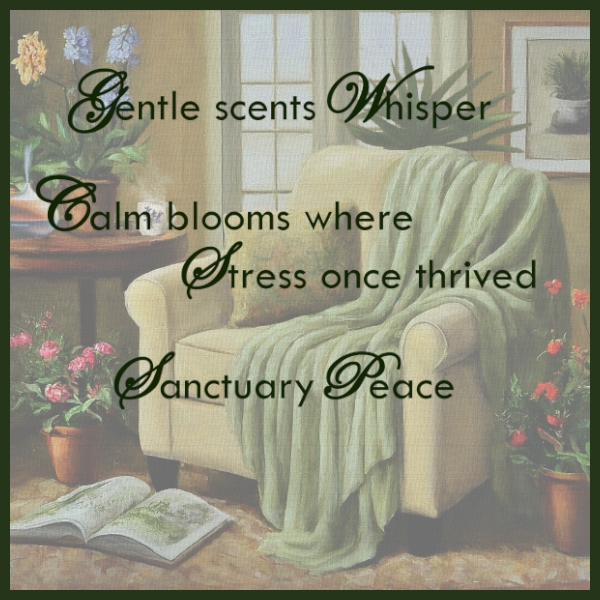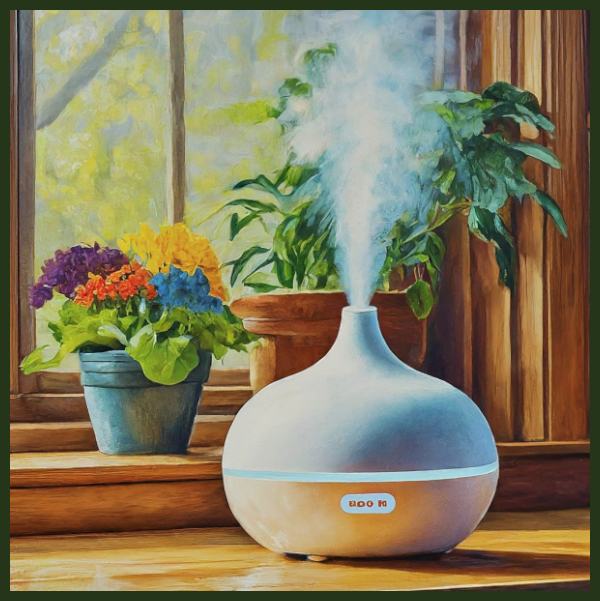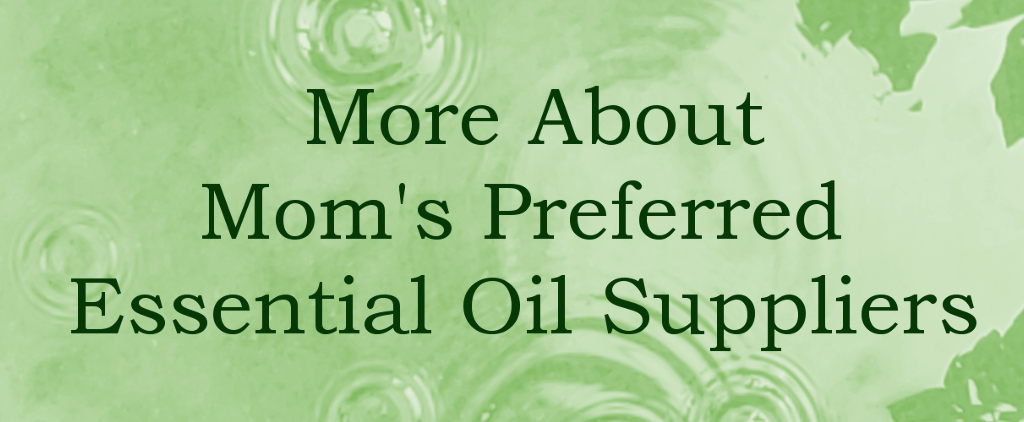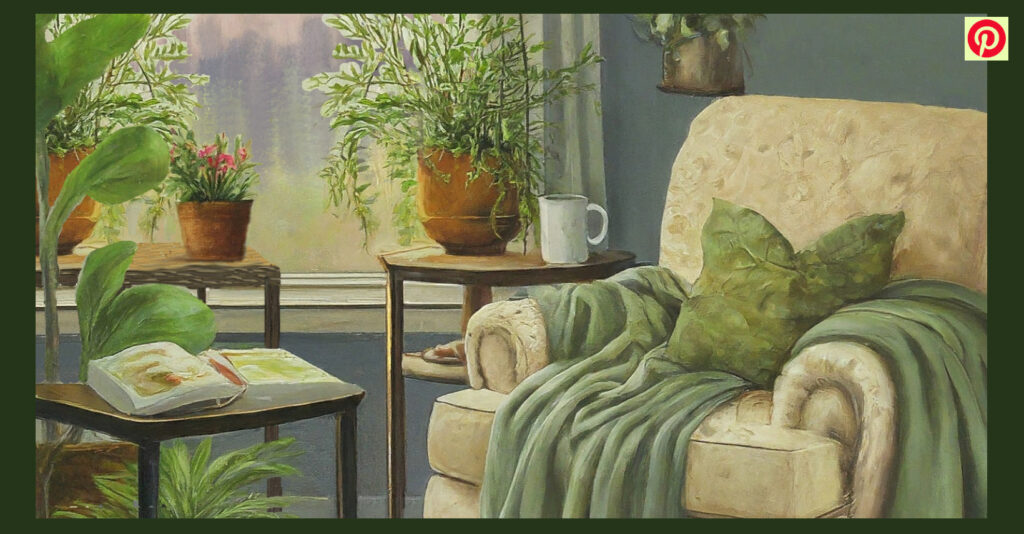
Breathe Deep, Relax Deep: Forest Bathing at Home
Stuck indoors and yearning for the tranquility of the woods? You’re not alone. Many of us crave nature’s restorative powers, but specific limitations keep us from experiencing shinrin-yoku, the Japanese practice of forest bathing. And that’s okay, because you can use plants, essential oils, sounds, and fabrics to experience the benefits of forest bathing in your personal sanctuary.
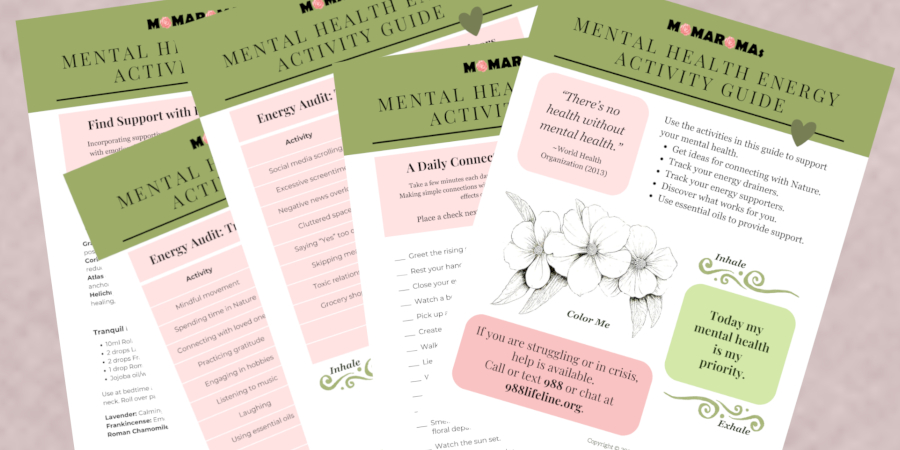
It’s time for a Mental Health Check-in!
Download your
FREE Mental Health Energy Activities Guide to begin your journey toward a more vibrant day!
[This post contains affiliate links. If you make a purchase through one of these links I may earn a commission. This does not impact your price. For more information, please see our disclosure.]
In this Post:
Setting the Stage for At-Home Forest Bathing
While studies on digital forests mimicking the benefits of real ones are ongoing (a 2022 study showed promise![1]), you can bring the essence of shinrin-yoku right into your home. Here’s how to create a forest bathing experience that soothes the mind, invigorates the senses, and boosts mental energy.
- Create Your Sanctuary. Choose a quiet, clutter-free space with natural light. If possible, position yourself near a window with a view of trees or greenery. Or nestle your sanctuary among green potted plants.
- Consider the Light. Harsh lighting disrupts our natural rhythms. Opt for soft, natural light through a window, a sun lamp on low setting, or even candlelight to create a calming ambiance. If using a candle, opt for a pure unscented beeswax candle as the gentle honey-like aroma is unobtrusive. (You can easily make your own Beeswax Candles.)
- Get Comfortable. Settle into a comfortable chair or create a cozy nest on the floor with pillows and blankets. Or slip on a really comfy pair of house shoes if you plan to care for the plants in your sanctuary.
- Enhance Negative Ion Presence. Plants and flowing water contribute negatively charged ions to the air which provides us with more energy and feelings of well-being. A small trickling fountain and air ionizers are a great way to promote negative ions in your sanctuary.
“When my attention focused on that plant, I didn’t think about my job…it all melted away like magic…and little by little, my soul healed.”[2]
~Karen Hugg, Leaf Your Troubles Behind (2022)
Forest Bathing is About Engaging the Senses
We get the most out of a forest bathing experience when we put aside the world outside our sanctuary and engage all our senses.
- Sight: Surround yourself with nature-inspired elements. Fill your personal sanctuary with houseplants, nature photographs, or other nature images that encourage long gazes.
- Touch: Bring the texture of nature indoors. A bowl can be filled with smooth and rough stones, pinecones, pieces of wood, and other items from Nature to touch during your forest bathing session. You can also use this time to care for your plants, examining leaves, removing wilted leaves and flowers, and rotating the pots. Research indicates that simple interactions with our plants can reduce mental and physical stress and enhance our calm.[3]
- Smell: Aromatherapy plays a key role in forest bathing. Essential oils can recreate the invigorating scents of the forest. Diffuse them, apply a roll-on blend to pulse points, or apply an aromatic, grounding massage oil. Nestle your “touch” bowl items in aromatic cedarwood chips.
- Sound: Forest sounds are readily available online or through a nature sound app. Play recordings of distant birdsong, rustling leaves, or a babbling brook to enhance the virtual experience of a serene forest.
- Taste: Sip a cup of herbal tea during your home sanctuary time. Enjoy gentle, supportive herbs such as Chamomile, Lemon Balm, Rose, and Holy Basil.
- The Sixth Sense: Bring awareness to your emotions in your personal sanctuary. The more time you spend exploring your senses, the easier it will be to become aware of the feelings of transcendence combined with grounding that forest bathing promotes.
“Nature takes our breath away and breathes new life into us.”[4]
~Dr Qing Li, Forest Bathing (2018)
⭐Personal Sanctuary Peace Essential Oil Blend
- 3 drops Hemlock essential oil (Tsuga canadensis)
- 2 drops Balsam Fir essential oil (Abies balsamea)
- 1 drop Bergamot essential oil (Citrus bergamia)
- 1 drop Patchouli essential oil (Pogostemon cablin)
🌺See my Recommended Suppliers below
This essential oil blend is breath-opening with a sweet, fresh, earthy aroma and a calming, grounding energy. Incorporate a diffuser ritual into your personal sanctuary time. Take a short sniff from each bottle as you blend, or if you’ve created a stock bottle, take a few short sniffs from that before adding 5-7 drops to your diffuser.
Get Stock Bottle Drop Counts
Here are the drop counts for a 5ml essential oil bottle. This will hold about 100 drops of essential oil (depending on the viscosity of the oil and the size of the reducer orifice).
Add your drops directly to the essential oil bottle. Then insert the reducer and cap tightly. Rock the bottle several times. And, lastly roll the bottle between the palms of your hands for at least 30 seconds. This allows the oils to fully blend with each other and it imparts a bit of your energy to the blend.
And remember: Affix a label right away!
My Personal Sanctuary Stock Bottle
- 42 drops Hemlock essential oil (Tsuga canadensis)
- 28 drops Balsam Fir essential oil (Abies balsamea)
- 14 drops Bergamot essential oil (Citrus bergamia)
- 14 drops Patchouli essential oil (Pogostemon cablin)
Mindfulness Matters
Forest bathing is all about connecting with nature through your senses. Here are some practices to deepen your experience:
- Slow Down. Put away your phone and other distractions. Leave to do lists and projects outside your sanctuary.
- Focus on Your Breath. Take slow, deep breaths, inhaling through your nose and exhaling through your mouth. Feel your belly rise and fall with each breath.
- Observe Mindfully. Engage your senses. Notice the details of your surroundings—the textures, sounds, and subtle scents you may have overlooked before.
- Experience Gratitude. Take a moment to appreciate the beauty and peace you’ve created in your personal sanctuary.

Plants for Your Personal Sanctuary
Many years ago, NASA did a study on plants and indoor air quality.[5] This was a controlled study with plants exposed to a single toxic VOC (volatile organic compound) and wasn’t representative of the normal indoor environment. You would need hundreds of plants in a small footprint to achieve the same results. However, plants are an integral component in recreating the forest bathing experience in your personal sanctuary.
I’ve included some of the NASA plants in the list below, and in his book Forest Bathing, Dr. Qing Li includes suggested plants for bringing the outdoors in.[4]
Ultimately choose plants that you love and fit your lifestyle. Here are some suggestions:
- Areca Palm (Dypsis lutescens)
- Bamboo Palm (Chamaedorea seifizii)
- Chinese Evergreen (Aglonema modestum “Silver Queen”)
- Corn Plant/Mass Cane (Draceana spp)
- Gerbera Daisy (Gerbera jamesonii)
- Orchids (all types)
- Pathos (Epipremnum aureum)
- Peace Lily (Spathiphyllum wallisii “Mauna Loa”)
- Philodendron spp.
- Pot Mum (Chrysanthemum morifolium)
- Snake Plant (Sansevieria lauentii)
- Spider Plant (Chlorophytum elatum)
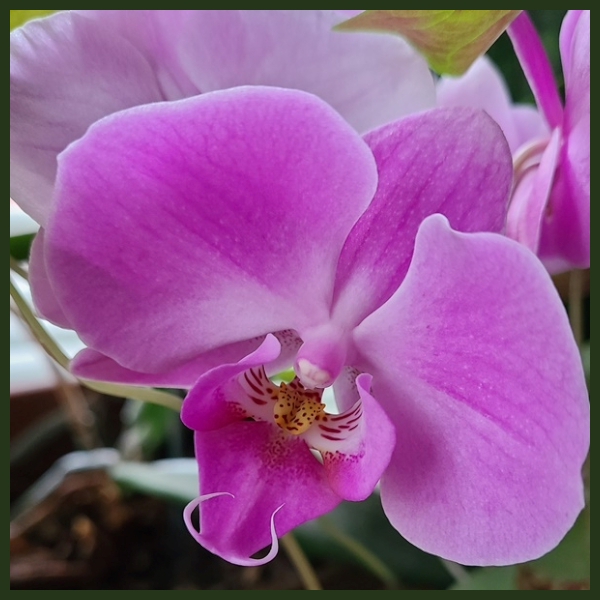
🌺See my Recommended Suppliers below
🔶️Pets & Plants: If you have pets, always check for potential toxicity before bringing a potted plant into your personal sanctuary.
Forest Bathing at Home: A Journey Within
While a real forest offers a unique and powerful experience, creating a forest bathing ritual at home can be surprisingly effective. By engaging your senses and practicing mindfulness, you can harness the restorative power of Nature and bring a sense of calm and well-being into your life, even when you’re housebound.
Remember, consistency is key. Schedule regular sessions in your personal sanctuary, even if it’s just for 15 minutes a day. With a little practice, you’ll find yourself feeling more grounded, centered, and connected to the natural world, right from the comfort of your home. (More ways to replenish mental energy.)

References
- Reese, G., Stahlberg, J., Menzel, C. (2022). Digital shinrin‑yoku: do nature experiences in virtual reality reduce stress and increase well‑being as strongly as similar experiences in a physical forest? Virtual Reality, 26:1245-55. https://doi.org/10.1007/s10055-022-00631-9
- Hugg, K. (2022). Leaf Your Troubles Behind. Prometheus Books.
- Lee, M., Lee, J., Park, B, Miyazaki, Y. (2015). Interaction with indoor plants may reduce psychological and physiological stress by suppressing autonomic nervous system activity in young adults: a randomized crossover study. J Physiol Anthropol, 34:21. https://doi.org/10.1186/s40101-015-0060-8
- Li, Q. (2018). Forest Bathing: How Trees Can Help You Find Health and Happiness. Viking.
- Wolverton, B.C., Johnson, A., Bounds, K. (1989). Interior landscape plants for indoor air pollution abatement. NASA. NASA-TM-101766
📌Mental Energy & Wellness Pins

Shopping for Your Personal Sanctuary
Personal Sanctuary Blend Essential Oils
- Hemlock essential oil (Tsuga canadensis):
- Aromatics International, organic.
- Balsam Fir essential oil (Abies balsamea):
- Aromatics International, organic
- Plant Therapy, sustainable (Direct and Amazon).
- Bergamot essential oil (Citrus bergamia):
- Aromatics International, organic (for inhalation)
- Plant Therapy, organic, skin-safe FCF (Direct and Amazon).
- Patchouli essential oil (Pogostemon cablin):
- Aromatics International, organic
- Plant Therapy, organic (Direct and Amazon)
- Plant Therapy, Aged Dark Patchouli, richer deeper aroma (Direct and Amazon).
Personal Sanctuary Accessories
- Personal Sanctuary Plants
- Visit a knowledgeable local garden center
- Botanical Interests for indoor herb garden seeds
- Outside In (not an affiliate link) – a Florida-based indoor plant provider who hand-picks plants from local nurseries; ships within continental US.
- Air Ionizers (Amazon) – I use these throughout my house, not just in my personal sanctuary.
- “Coffee Table” books – these make great sources of Nature imagery
Books on Forest Bathing & Gardening
- Leaf Your Troubles Behind, by Karen Hugg—how a garden, big, small, or even container, can help reduce your stress and enhance your well-being (Amazon)
- The Healing Magic of Forest Bathing, by Julia Plevin—a guide book to forest bathing, with activities to inspire your connection with Nature (Amazon)
- Forest Bathing, by Qing Li, MD PhD—the “definitive” book on shinrin-yoku and connecting with Nature for well-being (Amazon)
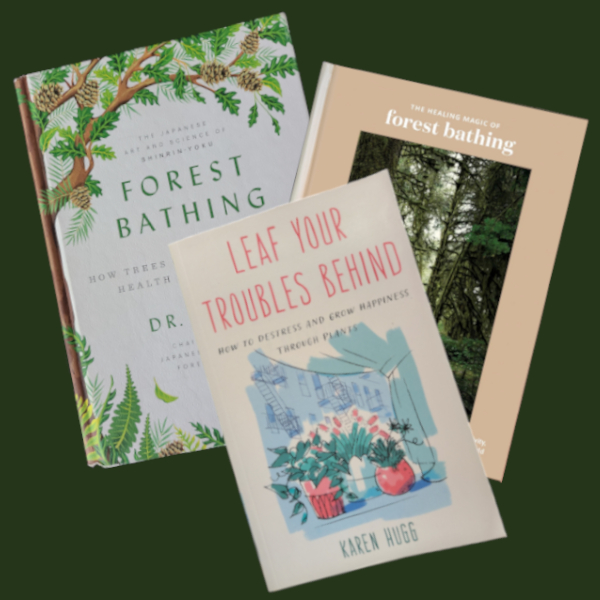
This information has not been evaluated by the Food and Drug Administration and is not intended to diagnose, treat, cure, or prevent any disease. It is for educational purposes only.
All recipes provided are for personal use and are not designed for re-sale or large-scale manufacturing.
Please consult your doctor, naturopath, herbal practitioner, or other qualified health professional for medical advice and before starting any herbal regimen, particularly if you are pregnant or nursing, have any existing medical conditions, or are taking any medications.
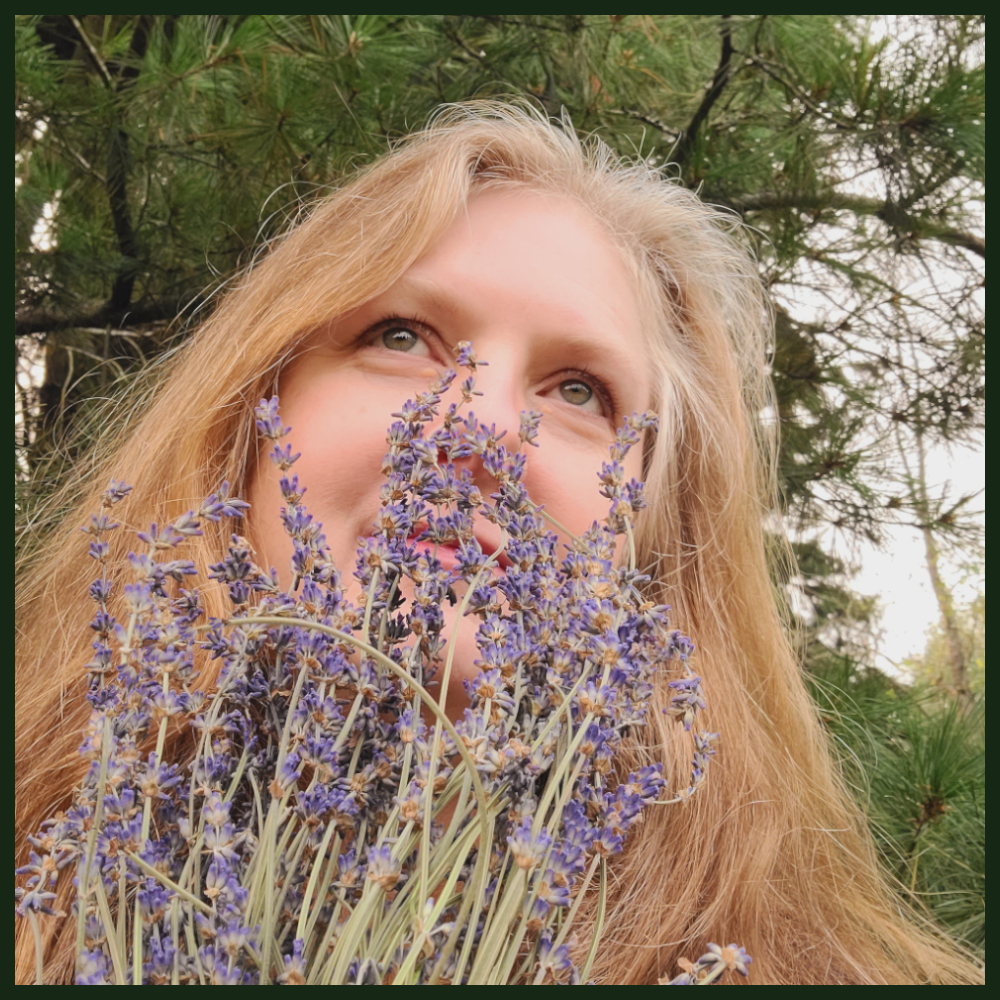
Chris P | Author, Certified Aromatherapist, Natural Skin Care Formulator
Chris (“Mom”) enjoys formulating bespoke aromatherapy, skin care, and herbal products to support her family, pets, friends, and clients. She also loves experimenting with recipes in the kitchen. An avid reader, writer, and lifetime learner, Chris enthusiastically explores research rabbit holes and then writes about her discoveries.💚 (Learn more >>)


